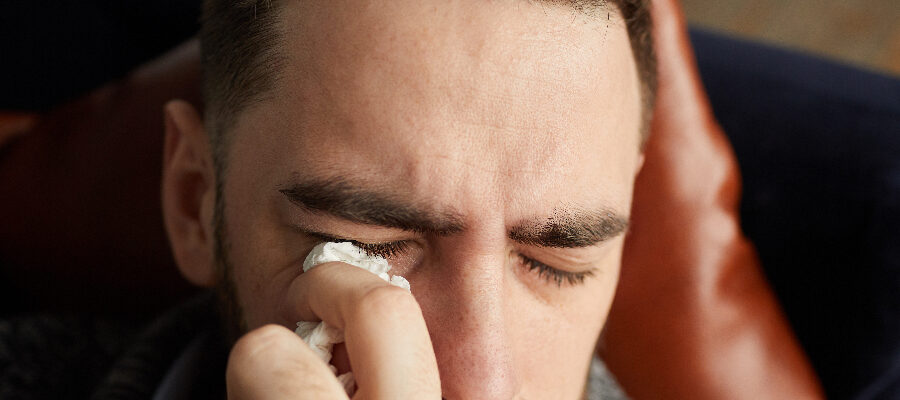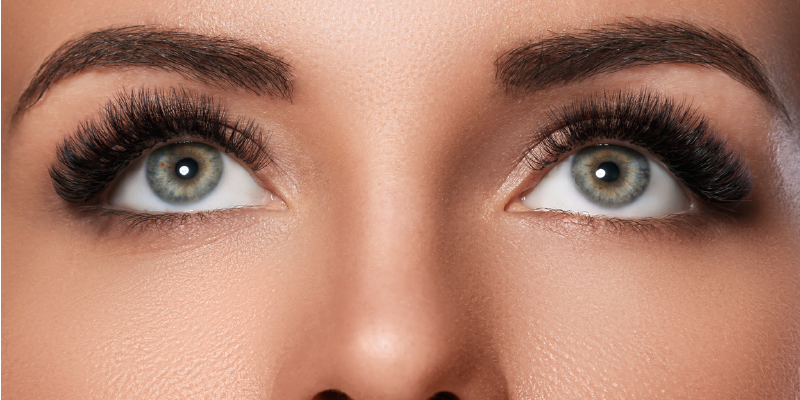A person’s eyes generate secretions or “discharge” throughout the course of the day. This is a normal and very important function because through this process, the eyes lubricate and clean themselves. While most of this discharge is not a sign of anything unhealthy, occasionally, it signals a cause for concern.
In this article, you’ll discover 8 types of eye discharge and the medical conditions that go with them. Each symptom is a clue that helps doctors diagnose your eye problem.
Then we will explore ways you can combat your eye discharge and soothe irritation.
Crusty Mucus

Many times, crusty mucus that forms on your eyelids is a sign of blepharitis which can be caused by bacteria. When the mucus builds up, it flakes similarly to dandruff. Frequently, blepharitis results in inflammation and redness of the eyes.
After diagnosis, your doctor may suggest that you treat this condition by gently applying a warm, moist washcloth to your eyelids.
Once you have used a soft cloth to remove any crusted over discharge, it’s best to cleanse the area with an appropriate product. This helps to keep the area clean and reduce bacteria.
Dry Discharge
A large number of people who experience dry mucus in their eyes are suffering from dry eye syndrome. This condition causes your body to make fewer tears.
Tears contain a mixture of mucus, oil, and water that help to lubricate your eyes. Less water is present in the tears when you have dry eyes. Because of this, your eyes produce tears that contain a higher amount of mucus instead, making your eye discharge sticky.
Dry eye disease is common in the elderly. Sufferers feel as though something is in their eyes and experience redness, blurred vision, and eye fatigue.
To combat dry eye and the effects of less tear production, your doctor may recommend regular use of eye drops.
Thick Discharge
Sometimes, thick discharge is a sign of a bacterial eye infection that affects the conjunctiva. The conjunctiva is a thin, protective membrane that lines the inside of your upper and lower eyelids and the white part of your eyes.
When this area becomes inflamed, it’s known as conjunctivitis (Pink Eye). It can be caused by bacteria, a virus, or an allergic reaction. If your discharge is thick, the pink eye is most likely a bacterial infection.
But this is an extreme case. More commonly, the condition results in the following classic symptoms:
- Redness
- Eye irritation
- Itching
- Pain
There are many over the counter products and home remedies that may help someone with a minor case of conjunctivitis. However, if at any point you develop gray or green mucus, seek immediate medical attention.
White or Yellow Discharge
When the body’s tear drainage system (the nasolacrimal sac) is infected, it may cause a blocked tear duct and result in white or yellow mucus. This condition is easily identified because the mucus will appear as small balls.
If a medical professional confirms the infection, you’ll be diagnosed with dacryocystitis. This condition is often associated with redness, pain and swelling, especially in the corner of your eye.
Babies may be born with clogged tear ducts. In this case, it’s considered harmless and usually goes away on its own.
In the most serious forms, bacterial conjunctivitis can result in a person’s eyelid becoming completely sealed shut by mucus. This occurs frequently when sleeping. Upon waking, the eyelids cannot open until warm compresses are applied to loosen the discharge.
If you believe you have this type of infection, it’s crucial that you seek medical attention. Dacryocystitis can be very serious if not promptly treated. You may need prescription antibiotics as soon as possible.
Stringy Mucus
According to Johns Hopkins Medicine, if you notice watery discharge with stringy mucus in your eyes, you may have allergic conjunctivitis. It’s a very uncomfortable condition, but typically not cause for alarm.
The mucus is stringy because the histamine response causes the secretions to stick together.
If a person’s allergic conjunctivitis is serious enough, a medical professional may prescribe eye drops, an antihistamine, or other types of medication.
Watery Mucus
Many times, if you have eye discharge that is watery in nature, you probably have viral conjunctivitis. Adenovirus is responsible for the vast majority of cases (and most cases are in children).
Direct contact, transmission through the air, or swimming pools are the three most common ways you can contract the virus. If you have contracted viral conjunctivitis, you may also experience the following symptoms:
- Blurred vision
- Redness
- Itching
- Burning
- Pain
- Swollen eyelids
Viral conjunctivitis is not simply a condition of the eye, but often a symptom of a viral infection. You may also have swollen lymph nodes, feel fatigued, and have a fever.
If you think you may have viral conjunctivitis, you should always see a doctor. Even COVID-19 conjunctivitis is possible and may lead to complications and even death in those who are at risk.
Yellow Mucus With A Small Bump

When the meibomian gland in your eyelid becomes blocked, an infection can occur. The infection creates inflammation that forms a small bump or stye (sty). The swelling can affect the entire eyelid, making it red, sore, and puffy.
In addition to the raised pimple-like bump, you may also experience yellow mucus and sensitivity to light.
It is important that people who experience sties see a doctor. Do not try to pop the stye because this can spread bacteria and worsen the condition. Forcefully breaking open the skin can lead to infection or even eye damage.
Steps to Combat Discharge
If you notice any type of discharge coming from your eyes, it is wise to consult an experienced physician. However, here are some steps you can do now to avoid further eye irritation:
- Avoid touching your eyes, which can spread bacteria or germs that cause eye infections.
- If allergies are to blame for the discharge, take steps to reduce the triggers.
- Take out contact lenses and consult your doctor before using them again. Contacts may aggravate the disease.
- Remove any eye makeup that may be contaminated with eye discharge or its cause.
- Wash your hands frequently. This helps prevent the spread of bacteria or the introduction of foreign (and potentially harmful) substances in your eyes.
Soothe Eye Irritation With Eyelid Cleansers

By keeping up good hygiene habits, you can avoid most causes of eye discharge. And one of the best ways to keep your eyelids clean is by using a daily cleanser designed to promote healthy skin.
Cliradex uses a natural and proven formula that will deeply clean the skin around your eyes as well as your entire face. We offer several natural products that can help you soothe irritation and kill microorganisms like bacteria and Demodex mites.
Cliradex is available as both a face cleanser and a convenient disposable moist towelette to wipe eyes. Their special formula washes away debris and soothes your skin to bring you much-needed relief.
Ask your doctor if Cliradex is right for you!
Please note that if you have been experiencing poor eye health that involves abnormal eye discharge for 7 days or more, you should seek medical care immediately.
Pain and impaired vision can be signs of a severe infection. Cliradex is not a substitute for professional medical treatment. Always speak with your doctor if you are concerned about the way your eye discharge looks.





